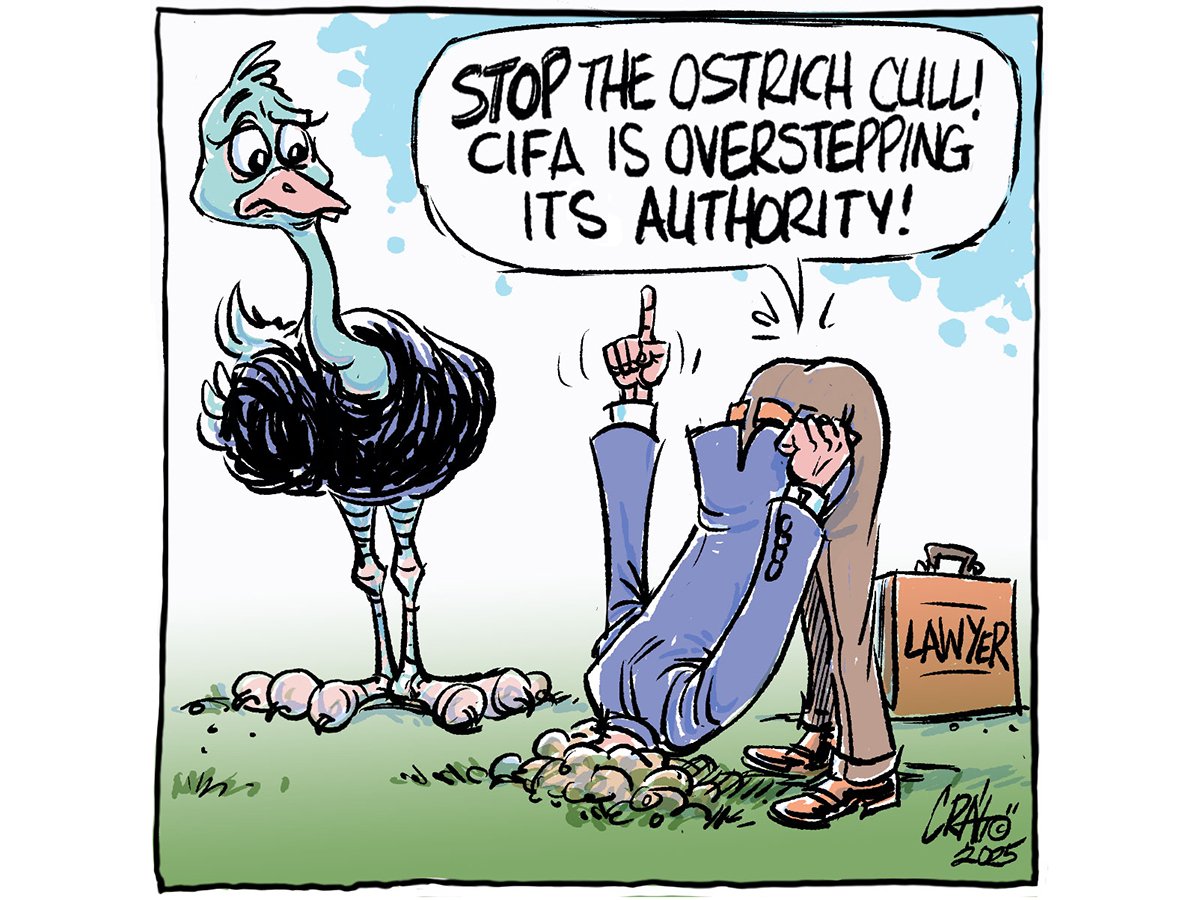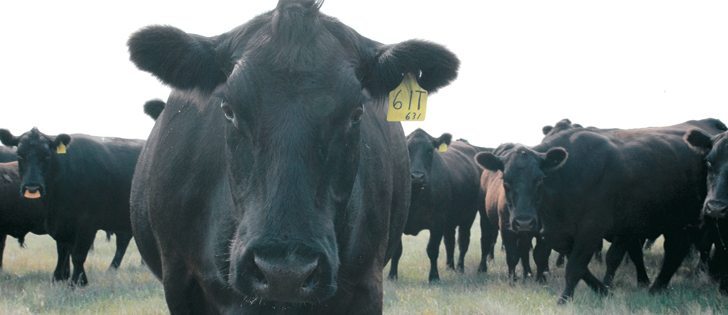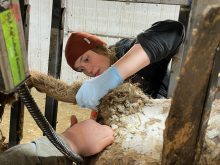Body condition scoring really means assessing the condition and fat cover on cows to enable producers to feed them for optimal growth and reproductive performance.
It may mean separating the fat and thin groups from the main herd and allowing producers to feed them separately to save feed on the fat ones and build up condition on thin cows.
Pregnancy checking in the fall is the best time to body condition score, which allows producers to get the cattle in optimal shape before calving time.
Read Also

The Canadian Food Inspection Agency’s animal health efforts require producer support
Livestock producers should be concerned by how an ostrich farm is using crowd funding to help it defy a Canadian Food Inspection Agency order to destroy more than 300 birds.
It also helps them carry through to the breeding season and achieve optimum conception.
Canada uses the five point system with one being emaciated and five being extremely fat. In simple terms, the fat cows need to go on a diet and the thin ones need to be fed more as a group or possibly put in with the bred heifers.
Producers should check for fat cover on the short ribs, tail head, spine and hooks or pin bones. When the cow is the ideal condition of three, they should feel only the tips of the short ribs with firm pressure.
Many cows can be easily categorized into the thin, fat or normal categories because separating them into three groups is common, even with large herds.
The oldest cows and the first calvers commonly fall into the thin category. It shouldn’t come as a surprise that first calvers lose weight when looking at the large calves they produce.
However, this group is the future of the herd, so they often need a little more tender loving care.
Fall is the ideal time to body condition score for spring calving cows. There is the least demand on the cows because the calves are weaned and they are usually being pregnancy checked and treated for internal and external parasites and potentially scours vaccines.
Health and production problems can be minimized by getting cows in the proper shape for fall.
This is particularly true this year because of the drought that affected parts of Western Canada and resulted in many cows being thinner than normal. It’s an ideal year to implement body condition scoring.
Producers will obviously focus on protein and energy to get the weight on, but they also shouldn’t forget about adequate vitamins and minerals because they are setting the cows up for next year’s production and growth cycle.
The benefits are many:
- Increased energy.
- Reduced calving issues.
- Colostrum will be much better quality, which reduces calf health issues.
- Uterine contractions will be harder so calving is quicker.
- Fewer stillborns results in a higher calving percentage.
- Calves are born more vigorous and are more likely to get up and suckle.
- Fewer retained placentas.
- Milk production and subsequent growth of the calf will be better.
All these things happen because we pull out the thin cows, mainly first calvers, and feed them separate or with the bred heifers.
Thin cows that do not increase body condition may have a medical condition. As well, cows carrying twins and old cows with bad feet and kidney infections may also be very thin.
Fat cows will have more problems calving because of internal fat, and uterine contractility is reduced.
Cows must be on a rising plane of nutrition to breed, and producers who are trying to catch them up from calving too thin will see a much reduced or spread out conception rate.
Separating and adjusting for thin and fat cattle will give producers significant influence on the im-pending calf crop and set up their cattle for breeding, which affects the following year’s calf crop.
They also improve the many health parameters that increase calf viability and the conception rate for the following year.
Roy Lewis works as a technical services veterinarian part time with Merck Animal Health in Alberta.















